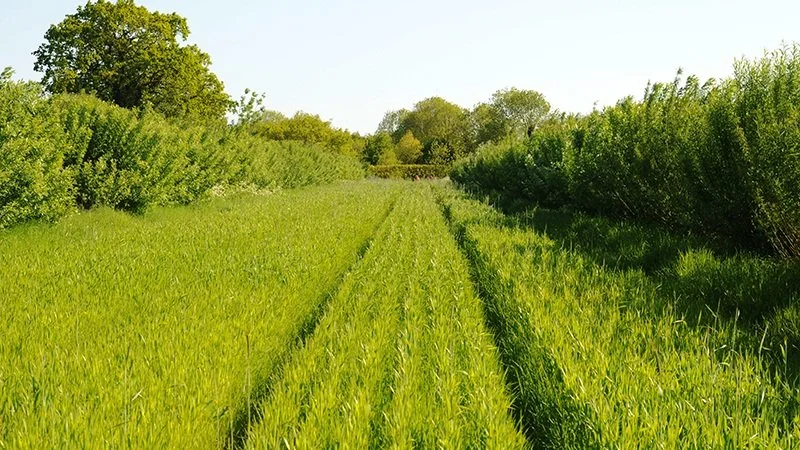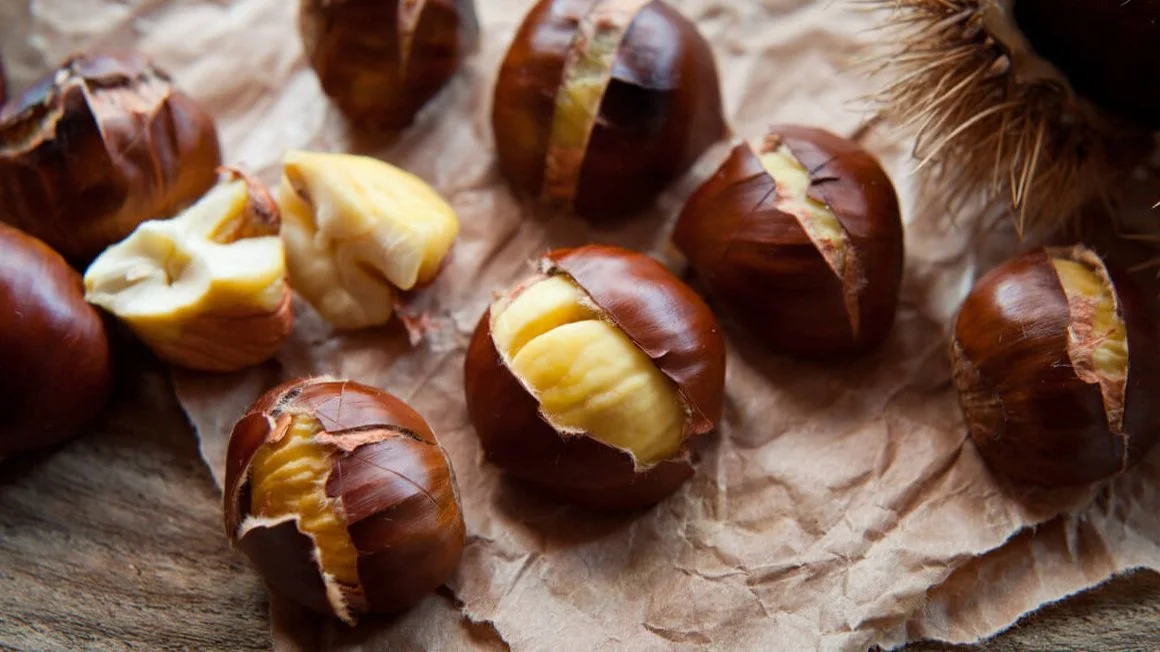Food
YQ Wheat
YQ wheat is a population of wheat with very high levels of genetic diversity, referred to as a heterogeneous grain. Due to this genetic diversity within the crop the wheat requires no input crop protection. It makes the wheat entirely unreliant on chemical fungicides or insecticides, whose widespread use cause significant damage to fungal and insect biodiversity and damages the soil microbiome. The diversity of the wheat plants within the population also enable it to provide resilient yields in times of changing climate and environmental pressures.
The genetic diversity of YQ was created by Prof. Martin Wolfe by crossing 21 modern varieties of wheat, each with every other, to create a super genetically diverse population, referred to as a Composite Cross Population. This genetic diversity allows the cereal to evolve in the field by natural selection, mimicking the evolution in the wild but with the farmer saving the seed and replanting the following season. In this situation the existence of pathogens are actually beneficial to the YQ wheat population, as the genetic diversity is such that only an insignificant number of plants can become infected, but in the process the resistance genes are activated in the rest of the population and are therefore enabled to be passed onto the next generation. This again mimics the natural relationship between cereals and their pathogens, who have co-evolved.
YQ wheat is used to make sourdough bread by Small Food Bakery, who won the BBC Good Food Award in 2018.
In 2022 wheat was the crop planted on the largest amount of land in the world, above any other crop at 219 million hectares. Across the industrialised world the vast majority of the wheat is farmed with a concoction of up to 38 chemicals, many of which are damaging to biodiversity and soil health. YQ and other heterogenous grains enable farmers to grow this incredibly important staple food without damaging biodiversity, and in fact supporting the diversity of fungi and insects, as well as facilitating the evolution of greater genetic diversity in wheat. If heterogenous grains were the predominant approach to wheat farming we could be having a positive impact on biodiversity in the process of feeding ourselves with delicious and nutritious bread.
Facts
A wheat plant has more genes than a human being. This genetic diversity evolved within wheat and other cereals as a way of protecting them against much shorter reproductive cycles and the rapid evolution of pathogens
Seed licensing law in the EU, UK, US and other parts of the world restricts the sale of seed only to seeds which can be demonstrated are genetically homogenous. These laws actively remove the natural genetic diversity of plants such as cereals, leaving them extremely vulnerable to epidemic disease and dependent on input crop protections such as chemicals for their protection.
The work of Prof. Martin Wolfe on YQ and his experiments at Wakelyns Agroforestry with the Organic Research Centre has led to a change in EU law, which now allows the sale of heterogeneous seed
Relationships between insects associated with wheat are now thought to be the source of the human gut microbiome’s ability to digest gluten. The epidemic of gluten intolerance is now hypothesised to be the consequence of insecticides which have broken the relationship between particular insects and wheat
Composite Cross Populations can be created for many different types of crop, not only cereals. The concept of Landraces can be applied to Composite Cross Populations as well as wild populations of cereals and other crops, to define a genetic group which has evolved to suit particular environmental conditions
Because of the genetic diversity within the crop, each individual plant within a YQ populations looks distinctively different, they are different heights, colours and have different size and shaped awns, for example.
Want to find out more?
Dive in deeper below.
Educational links:
Accessible -
Scholarly -
Purchase Links:
“Chestnuts are an alternative to cereals which could have a dramatically positive impact on biodiversity if we ate more of them. Cereals are annual crops, which are harvested at the end of the growing season and need to be planted again the following season. They do not grow deep root systems and these root systems tend to be removed from the ground if a farmer is tilling the soil after harvest. In the industrialised world, cereals are also farmed with an extensive concoction of chemicals that have a dramatically negative impact on biodiversity in multiple areas: the soil microbiome, insect diversity and biomass, and causing ecocide through river and coastal eutrophication created by the runoff of excess fertiliser. Chestnuts on the other hand are produced by trees which do not need chemical applications and have deep and extensive root systems that last for many decades.
These root systems create enormous habitats for soil organisms, supporting a whole soil ecology. They also deepen and improve the structure of the soil, bringing water up from deeper in the ground in times of drought and enabling water to infiltrate much better in times of heavy rainfall. Chestnuts have a huge array of natural associations with insects, mammals and birds and their presence provides habitat for many living things and food for many in addition to human beings. Chestnut agroforestry can be done with undergrazing of the trees, combining farming of sheep or cows with that of nuts. Both pasture and arable fields hold potential for conversion to agroforestry and chestnuts have massive potential as a tree to use in these systems. Planting a much greater number of chestnut trees and reducing the amount of land used for cereals would have a very substantial positive impact on biodiversity and would also contribute to improved diet. It is important to note that Chestnuts could be farmed badly, in a way which would damage biodiversity, just as wheat and other cereals can be farmed well, in a way that supports biodiversity.
Chestnuts do not contain gluten, so Chestnut flour would not rise to create bread, but it can be made into pancakes or tortillas. Of course they can also be eaten roasted, dried to be used for cooking, made into butter or cream, eaten as marrons glacés, or even made into beer or liquor.
Chestnuts, as many other nuts, have very diverse nutritional value with a complex mix of carbohydrates, fats and protein and excellent vitamins and minerals. Eating more chestnuts and less wheat could be beneficial for diet, as there are proportionally less carbohydrates and the fats can provide a slower release of energy.
Chestnuts are trees with a very wide native distribution throughout the world. They grow across the Eurpoean continent, from the British Isles down to the Mediterranean and grow from Turkey to China. There are also North American varieties.
The Chestnut tree is noted for attracting wildlife and are a haven for biodiversity. The nuts are an important food for jays, pigeons, wild boar, deer, and squirrels. American and Chinese chinquapins have very small nuts that are an important source of food for wildlife” - Source
“It has been a staple food in southern Europe, Turkey, and southwestern and eastern Asia for millennia, largely replacing cereals where these would not grow well, if at all, in mountainous Mediterranean areas. Evidence of its cultivation by humans is found since around 2000 BC.” - Source
“Chestnut timber is well used and chestnut forests can also be habitats for the growth of edible mushrooms.” - Source
“In Britain over 70 species of moths feed on Sweet Chestnut in the larval stage.” - Source
“Sweet Chestnut coppice can be home to a range of other scarce and threatened invertebrates.” - Source
Want to find out more?
Dive in deeper below.
Educational links:
Accessible -
Purchase Links:
Share your pictures and experience with us #BiodiversityFingerprint



